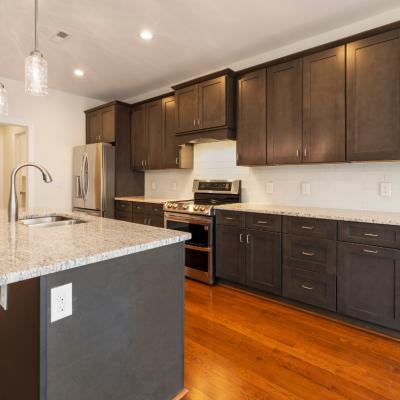Stylish and Functional Kitchen Cabinets: The Ultimate Guide to Choosing the Perfect Fit

The Importance of Kitchen Cabinets in Modern Homes
Kitchen cabinets are more than just storage units — they define the overall look, feel, and functionality of your kitchen. Whether you’re remodeling or designing a new space, cabinets are one of the most crucial investments you’ll make. They hold your cookware, utensils, and food items while shaping the room’s aesthetic. The right cabinetry transforms your kitchen from a basic cooking area into a stylish and organized hub of activity.
When selecting cabinets, homeowners often balance between design appeal and practicality. Modern kitchen designs lean toward minimalist, clutter-free spaces with sleek cabinetry that hides everyday essentials. However, traditional and rustic designs still have their charm, especially when paired with natural wood finishes that add warmth and depth to the room.
Types of Kitchen Cabinets: Finding What Fits Your Style
Understanding the different cabinet types helps you choose what suits your kitchen’s layout and storage needs. There are three primary categories: base cabinets, wall cabinets, and tall cabinets.
Base cabinets sit beneath countertops and form the foundation of most kitchens. They are ideal for storing pots, pans, and larger kitchenware. Wall cabinets, installed above counters, provide easy access to dishes, glasses, and pantry items. Tall cabinets, also known as pantry cabinets, maximize vertical space — perfect for storing bulk food supplies or cleaning materials.
Cabinet styles vary widely, from classic shaker cabinets, known for their simple framed design, to slab cabinets with flat, modern fronts. Homeowners looking for a blend of elegance and detail might prefer raised panel or beadboard cabinets, while those drawn to minimalist aesthetics often opt for frameless European-style cabinets that create a seamless look.
Choosing the Right Material and Finish
Material selection plays a key role in determining your cabinets’ longevity and appearance. Solid wood remains a timeless favorite for its durability and natural beauty, available in oak, maple, cherry, and birch varieties. Plywood and medium-density fiberboard (MDF) are budget-friendly alternatives that still offer strength and versatility. For those seeking a modern touch, thermofoil and laminate finishes provide a sleek, easy-to-clean surface at a lower cost.
The finish you choose dramatically influences the kitchen’s tone. Stained finishes highlight the natural wood grain, ideal for rustic or traditional kitchens, while painted finishes allow more color customization. White and gray remain popular for creating a clean, open feel, but darker tones like navy or forest green are trending for homeowners who want a bold, sophisticated statement. Matte finishes add subtle elegance, while high-gloss finishes reflect light, making smaller kitchens appear more spacious.
Design Tips for Maximizing Space and Efficiency
A well-designed kitchen layout combines accessibility, efficiency, and style. The work triangle — connecting the sink, stove, and refrigerator — remains the golden rule of kitchen design. Positioning cabinets around this triangle ensures smoother workflow and convenience.
Incorporate clever storage features like pull-out drawers, lazy Susans, and vertical dividers to keep everything organized. For compact kitchens, open shelving and glass-front cabinets help create an airy feel without overwhelming the space. Lighting also plays a major role: under-cabinet LED strips not only brighten your workspace but also enhance the overall ambiance.
Consider your lifestyle when designing your cabinet layout. If you love cooking, prioritize deep drawers for pots and pans. Families may prefer extra pantry space, while entertainers might choose display cabinets with glass doors for showcasing dinnerware or wine collections.
Maintenance and Long-Term Care
Proper care ensures your kitchen cabinets retain their beauty and function for years. Regularly wipe down surfaces with a mild soap solution to prevent grease buildup. Avoid abrasive cleaners that can damage finishes, and periodically check hinges and drawer slides for smooth operation. For wood cabinets, occasional polishing helps preserve the sheen and prevent drying or cracking.
It’s also wise to maintain humidity control in your kitchen. Excess moisture can cause wood to warp or laminate to peel over time. Installing an efficient ventilation system minimizes these risks and prolongs your cabinets’ lifespan.


